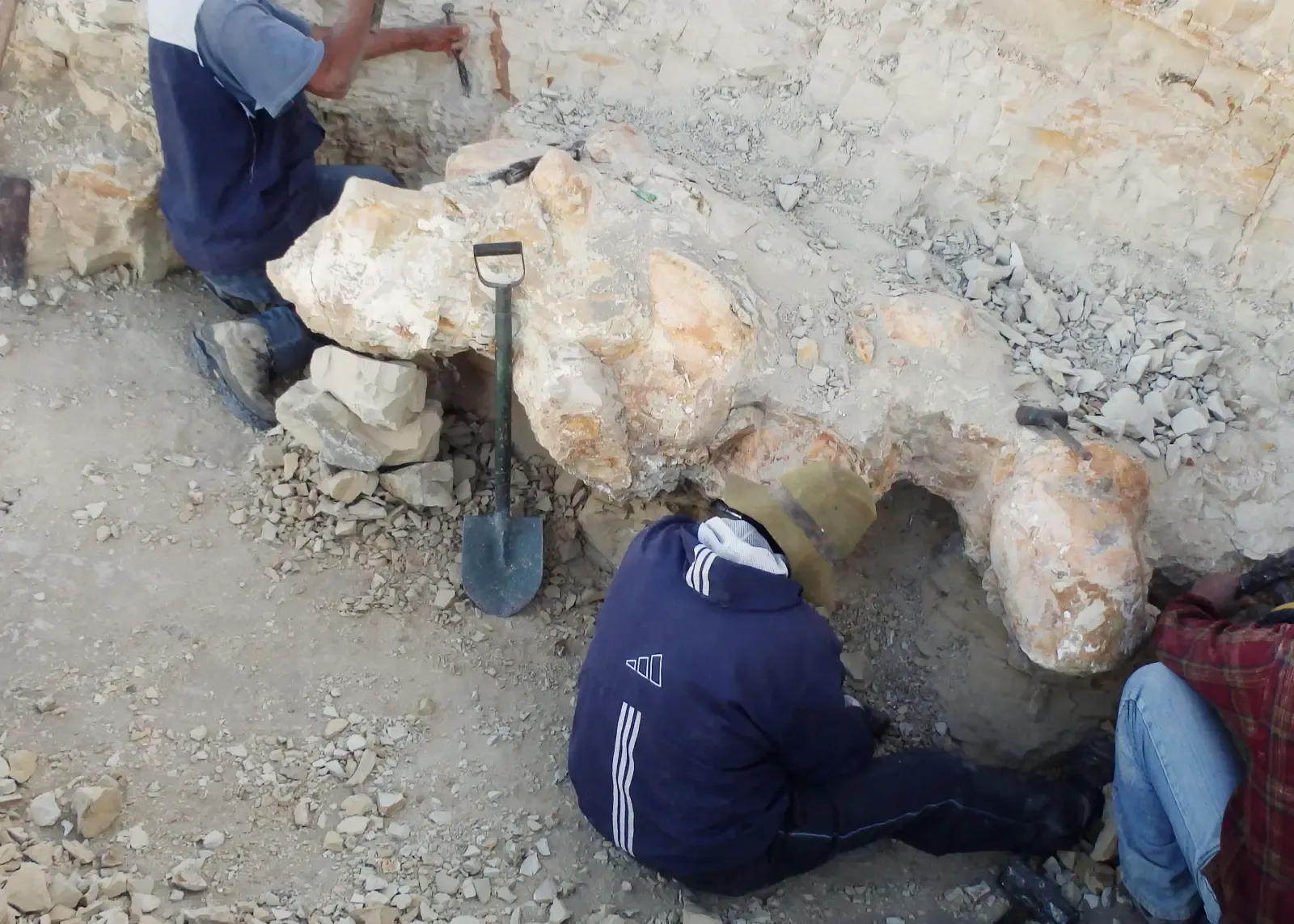Ancient Whale Found in Peru Desert, The Heaviest Animal Ever
A colossal ancient whale discovered in Peru desert might be the heaviest animal on record, according to a new study. It's an ancient, long-extinct whale that would have tipped the scales at close to 200 tonnes.
There could be a new contender for heaviest animal to ever live. While today's blue whale has long held the title, scientists have dug up fossils from an ancient giant that could tip the scales.
Researchers described the species—named Perucetus colossus, or "the colossal whale from Peru"—in the journal Nature on Wednesday. Each vertebra weighs over 220 pounds (100 kilograms) and its ribs measure nearly 5 feet (1.4 meters) long.
"It's just exciting to see such a giant animal that's so different from anything we know," said Hans Thewissen, a paleontologist at Northeast Ohio Medical University who had no role in the research.
 |
| Digging up massive fossils from the creature in the Peruvian desert over the past decade. Credit: Giovanni Bianucci |
The bones were discovered more than a decade ago by Mario Urbina from the University of San Marcos' Natural History Museum in Lima. An international team spent years digging them out from the side of a steep, rocky slope in the Ica desert, a region in Peru that was once underwater and is known for its rich marine fossils. The results: 13 vertebrae from the whale's backbone, four ribs and a hip bone.
The massive fossils, which are 39 million years old, "are unlike anything I've ever seen," said study author Alberto Collareta, a paleontologist at Italy's University of Pisa.
After the excavations, the researchers used 3D scanners to study the surface of the bones and drilled into them to peek inside. They used the huge—but incomplete—skeleton to estimate the whale's size and weight, using modern marine mammals for comparison, said study author Eli Amson, a paleontologist at the State Museum of Natural History in Stuttgart, Germany.
They calculated that the ancient giant weighed somewhere between 94 and 375 tons (85 and 340 metric tons). The biggest blue whales found have been within that range—at around 200 tons (180 metric tons).
Its body stretched to around 66 feet (20 meters) long. Blue whales can be longer—with some growing to more than 100 feet (30 meters) in length.
This means the newly discovered whale was "possibly the heaviest animal ever," Collareta said, but "it was most likely not the longest animal ever."
It weighs more in part because its bones are much denser and heavier than a blue whale's, Amson explained.
 |
| A fossil of Perucetus colossus is presented to the public at the Natural History Museum of Lima, Peru Photo: Martin Mejia |
Those super-dense bones suggest that the whale may have spent its time in shallow, coastal waters, the authors said. Other coastal dwellers, like manatees, have heavy bones to help them stay close to the seafloor.
Without the skull, it's hard to know what the whale was eating to sustain such a huge body, Amson said.
It's possible that P. colossus was scavenging for food along the seafloor, researchers said, or eating up tons of krill and other tiny sea creatures in the water.
But "I wouldn't be surprised if this thing actually fed in a totally different way that we would never imagine," Thewissen added.
The lifestyle of a colossal whale
The findings suggest that gigantism or peak body mass among cetaceans had been reached around 30 million years earlier than previously thought, according to the study.
Given the amount of heavy bone, Perucetus “must have had a lot of lighter tissues, too,” Thewissen and Waugh wrote. “This is a fundamental difference compared with animals living on land for which all tissues contribute to weight that needs to be supported by body parts such as limbs. By contrast, in water, heavier tissues can be offset by lighter tissues to acquire neutral buoyancy, and total mass is less important.”
 |
| A fossil of Perucetus colossus is presented to the public at the Natural History Museum of Lima, Peru Photo: Martin Mejia |
The Perucetus specimen appeared to have reached sexual maturity, experts said, but might have still been growing, given the unfused ends of its vertebrae.
The authors didn’t have the animal’s skull or teeth, but its known characteristics indicate Perucetus likely fed near the bottom of the sea and wasn’t an active predator, Bianucci said.
The study authors have three hypotheses about Perucetus’ diet, Bianucci said: The whale might have been a plant eater like a sea cow, but this herbivorous diet would be the only case among cetaceans. Secondly, the ancient creature could have fed on small mollusks and crustaceans in sandy bottoms like the contemporary gray whale does. And thirdly, maybe Perucetus was a scavenger of vertebrate carcasses.
“Surely we will continue to explore the desert of Ica to find other fossils which can allow us to tell even more details on the extraordinary evolutionary history of cetaceans,” Bianucci said.
Knowing more about Perucetus’ life history could help answer other questions, such as whether the fossil is a testament to the origin of blubber, Thewissen and Waugh wrote.
“That hypothesis is consistent with the fossil’s age of around 39 million years old, from a time when Earth and the oceans were cooling and insulating blubber might have been an advantage,” they added. “It is too early to tell, but such considerations demonstrate that the importance of this fossil goes beyond the documentation of a previously unknown life form.”
The above story is based on Materials provided by University of Pisa.








